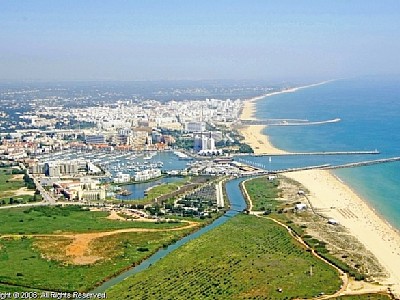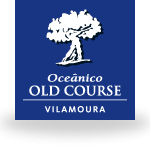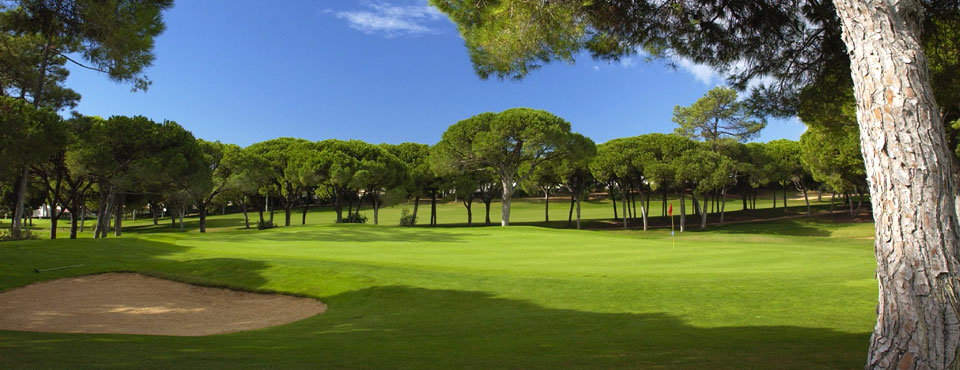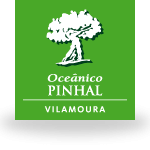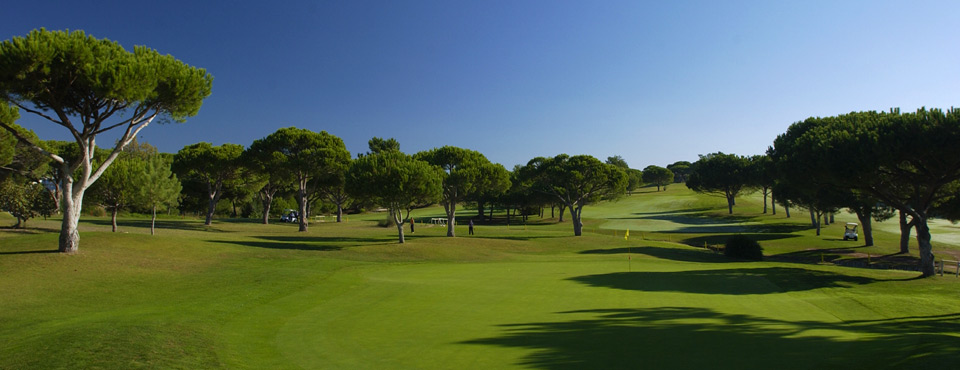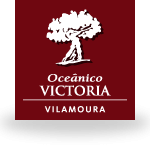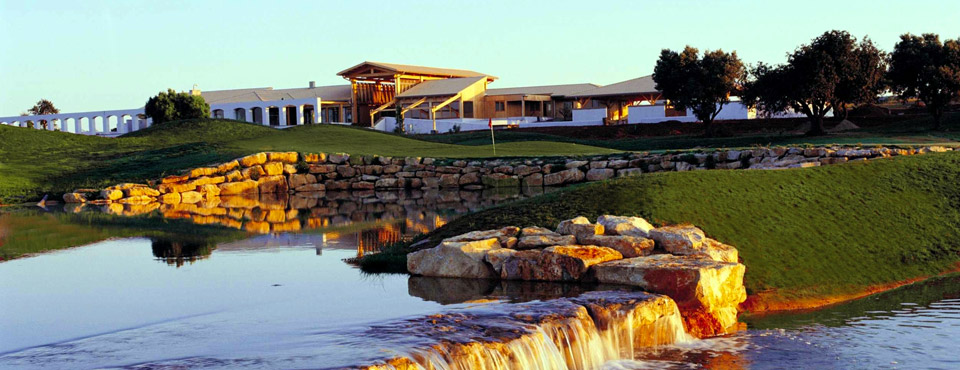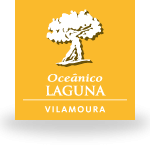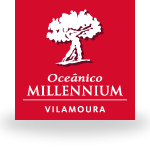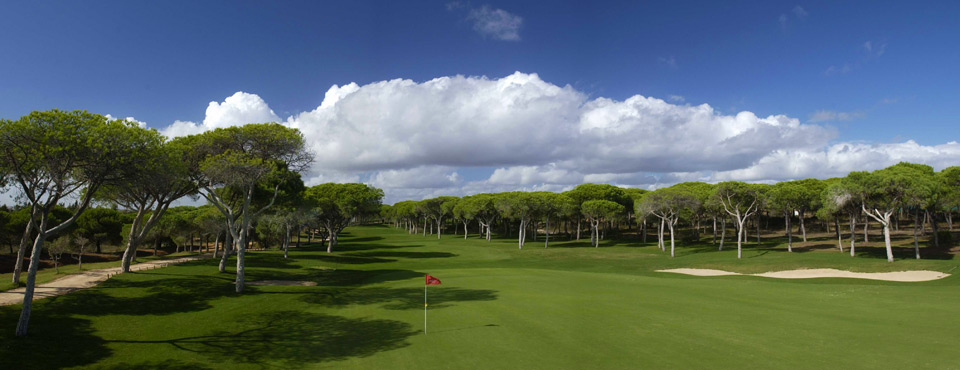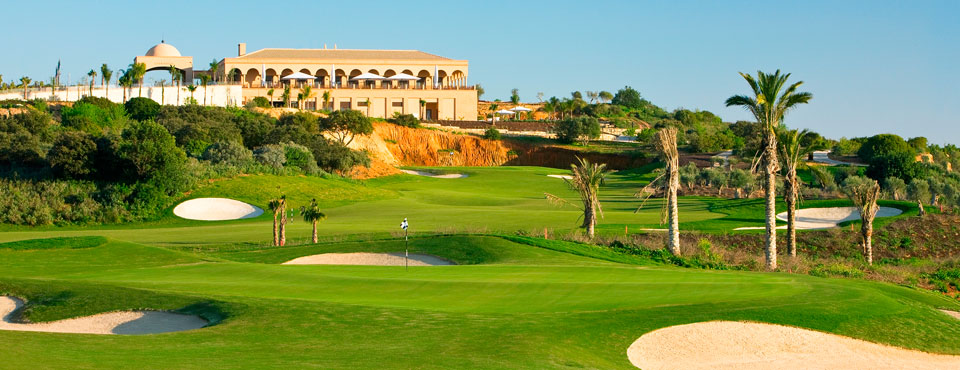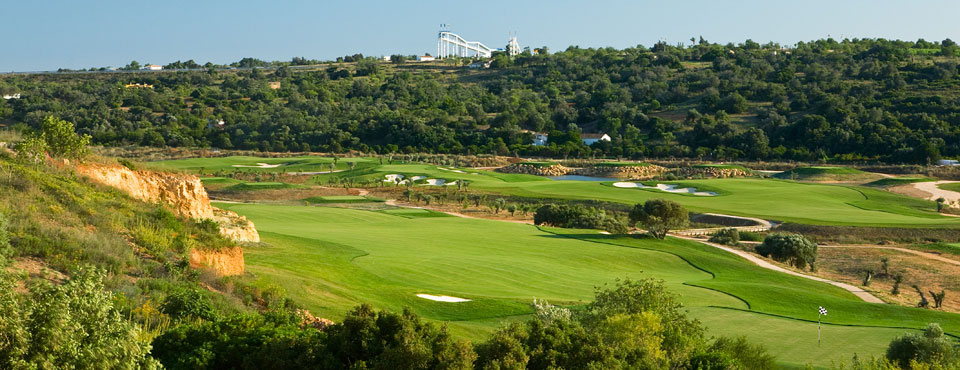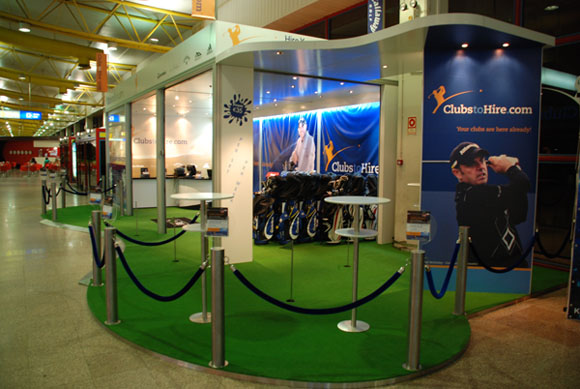Where the most westerly point of the European continent meets the mighty Atlantic Ocean you’ll find one of the best golf regions on the planet.
If you’ve battled bad roads and bad weather playing the golfing gems of Ireland, Scotland or England here’s one destination guaranteeing little driving time, an abundance of sunshine and plenty of tee times.
The European Tour has helped stamp Vilamoura on the golfing map and as Bernie McGuire discovered, Dom Pedro Vilamoura offers not one but seven golfing wonders.
****
NB – In 2016 Dom Pedro now manage the seven courses featured in this article
The Portugal Masters is one of a number of tournaments in recent years to make its way onto the European Tour Race to Dubai schedule.
Along with similar new events like the Abu Dhabi HSBC Championship, Portugal’s premier golf tournament has helped develop the region into one fast becoming associated as a golfing destination.
Naturally, Portugal has always been a favourite holiday location with Europeans, and particularly the British who in around two hours can leave behind the winter chills and be stepping off any number of low-cost airlines flying into Faro Airport.
From Faro it’s about a 20-minute drive to Vilamoura on Portugal’s sun-splashed Algarve.
Despite the name Vilamoura translating to ‘Moorish Town’, in terms of history there is very little to see in Vilamoura, and that’s hardly surprising as it has only really existed for about 30 years.
Located virtually in the middle of the Algarve coast, Vilamoura’s accessibility has helped it also become one of Europe’s largest beach resorts. The 20 square kilometre of purpose built resort are home to practically every form of sport, entertainment and amenity imaginable.
Combined with wide, well laid out roads, manicured gardens, public spaces and golf courses Vilamoura beckons you to sample this world class destination.
The town itself is built around the upmarket, 1,200-berth Vilamoura Marina that was built in the 1970s and it’s the marina that is home to smart, chic bars and restaurants, and all within easy walking distance of your hotel.
A great aspect in travelling to Vilamoura is that in booking into your hotel for five days, a week or whatever you don’t have to pack-up and move each morning as you might do if you were discovering golf in either Ireland, Scotland or most other European countries.
And in complete contrast to the dismissive reviews presented by Planet Golf, Vilamoura will stir your golfing spirit.
Besides one the appeals in playing golf is not only just the challenge but also savouring new course experiences no matter how well you play.
The Old Course gets its name for obvious regions as it’s the oldest among Vilamoura’s golfing wonders.
Designed by legendary English designer Frank Pennink, the course was opened in 1969.
In his younger days, Pennick played cricket at Lords and golf at Oxford University. He won the 1937 and ’38 English Amateur, the 1937 Royal St. George’s Gold Vase and the 1937 South of England Amateur. Those wins earned him a place in the 1938 and also first-ever GB & I winning Walker Cup side.
After serving as an RAF Squadron Leader in WW11, he turned to sports journalism and with his knowledge of golf he published the first Golfer’s Companion in 1962 that led eventually to golf design.
Pennick, whose business partner was Donald Steel, not only designed the Old Course at Vilamoura but many others including the much-acclaimed Noordwijk course in Holland and a venue for the KLM Open.
If Augusta National is the Cathedral of the Pines then what Pennick has designed at Vilamoura is the Avenue of the Pines.
Measuring 6,254-metres off the white and playing to a par 73 the Old Course is a wonderful walk among a forest of umbrella pines.
For the best part, it’s very much akin to trying to thread a needle where accuracy off the tee is a premium and where any errant drive or iron shot really leaves little chance of finding a green in regulation.
And right from the outset the Old Course grabs your attention.
At 310 meters off the back tee the downhill first is the shortest of the nine par fours but in saying that it is also one of the trickiest even if it also ranked second easiest on the score card.
The par three fourth hole is a Pennick gem. No striking views of the Atlantic but a very scenic, good honest par three measuring 163 meters off the back and 113 meters for the ladies.
You first have to clear the only water hazard on the course before needing to fly an umbrella pine guarding a generous green.
Holes five to nine, including the number one ranked eighth hole, continue the ‘Avenue’ theme ahead of a downhill par three at the 10th at 153-metres that’s ranked the easiest hole of the course.
The 18th is one of those sit up and take notice holes. At 413-meters off the back tee and ranked number three, Pennick has laid out a fitting challenge to end your introduction to Vilamoura.
Seven years after designing the Old Course, Pennick was invited to design a second course at Vilamoura in 1976.
In 1985, American Robert Trent Jones brought new challenges to the course so much so that you now have two very different architectural concepts, one British and the other American.
Three years after the changes the European Tour thought so much of the layout it staged the Portuguese Ladies Open.
The undulating par 72 layout measures 6,353 meters off the white tees.
The opening nine holes, including par fives at the first and third holes, wind through umbrella trees while the back nine, and commencing with an inviting uphill par four, is more open with views of the Atlantic.
The hardest hole on the course is the uphill par five, 13th.
If there’s a question mark on any Pinhal hole it’s the par five 17th measuring just four yards shy of 500-metres. You’re faced with a sharp 90 degree dog-leg to the right and with out-of-bounds right down the adjoining 11th to deter big-hitters cutting the corner.
The final hole, an uphill par four of 412-meters calls for a well struck tee shot to the right of centre and then leaving you a challenging downhill second shot to a green guarded by three deep bunkers.
The Victroia course has played host to the Portugal Masters since 2007, and with Melbourne’s Richard Green adding his name to the honour roll in 2010.
Late last year, young England rookie, Tom Lewis birdied four of his closing five holes to set up victory in only his third Race to Dubai event.
The effort later secured Lewis the prestigious ‘Sir Henry Cotton Rookie of the Year’ award.
The Victoria course had first played host to a big tournament when it hosted the 2005 World Cup won by the Welsh team of Bradley Dredge and Stephen Dodd.
It is an Arnold Palmer signature course that opened for play in 2004.
For those like Green and Lewis teeing-up in the Portugal Masters the course measures 6,611-meters off the gold or back tees. Off the white tees, it is a 6,094-meter challenge where water comes into play on seven holes including six holes from the 11ththrough to the last.
However in contrast to the Old and the Pinhal, the Victoria is very open and exposed.
One of the great holes on the course is the 391-meter par four dog-leg left seventh hole where you have to carry a water hazard off the tee but also avoiding bunkers if you too long right.
Then there’s the tricky par three eighth at just 134-meters and a hole that doesn’t have to be 180-meters plus to be a challenge.
Having played the course twice on Monday’s following the Portugal Masters it dishes up a very sizeable challenge.
And given the numbers that flock each year to watch some of Europe’s best golfers, it’s little wonder so many holidaymakers now enjoy playing a Race to Dubai tournament venue.
The Laguna was the third course opened in 1990 and designed by American-born architect Joseph Lee.
Lee, known as ‘Gentleman Joe Lee’ was a resident of Palm Beach National Golf Club in the States and he earned a reputation as a southern gentleman who designed and built player-friendly golf courses around the world.
He designed and/or renovated more than 250 courses, first working alongside noted architect Dick Wilson.
Among his more famous PGA tournament courses are Doral’s Blue Monster, LaCosta, Bay Hill, Cog Hill (Western Open), and Warwick Hills (Buick Open).
Laguna plays to 6,121-meters off the white tees and is laid out over low lying costal terrain and feature many water hazards but few trees.
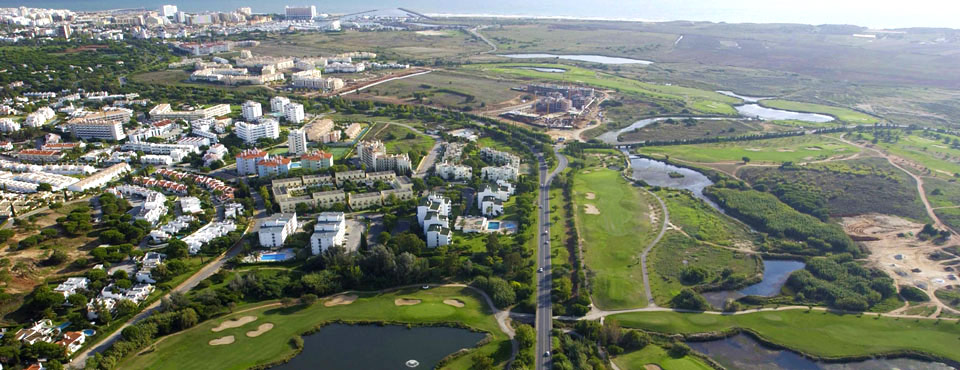
The Laguna course with Vilamoura Marina and Atlantic Ocean in the background. (Photo – Thanks to Oceanico Golf)
It is very generous off the tee with one of the more challenging holes being the par four, fifth hole where the drive must carry a lake and then the second shot must also carry a corner of the same lake.
There’s an unconventional par five 17th again with a virtual double water carry before a good chance to end the round with a birdie at the relatively short par four, 18th.
It’s probably the easiest of the seven courses.
No surprise the Millennium course was opened in 2000 although the original back nine was part of the 27-hole Laguna course.
Refurbishment work was undertaken on the existing nine holes and then joined to the new nine holes under the supervision of UK architect, Martin Hawtree.
Like the Laguna, the Millennium is mainly open, although holes three to seven do wind their way through umbrella pines.
The course measures 6,157-meters off the white tees and with water coming into play on five holes including the last two.
September 1st, 2008 was a milestone in the history of Vilamoura golf with the opening of two new golf courses – the O’Connor and the Faldo – designed by two greats of the game.
The pair are located side-by-side at Amendoeirav which is located about 50 klms from the Vilamoura resort.
O’Connor Jnr is one of the legends of European Tour golf having won 17 tournaments in seven different countries.
But if O’Connor Jnr will be remembered for one shot, it was his 2-iron into the 18th green to defeat then World No. 1 Fred Couples to hand Europe victory in the 1989 Ryder Cup at the Belfry.
His record in golf course design is just as renowned having also designed Palmerstown PGA National, Galway Bay Resort and Citywest in his native Ireland.
O’Connor Jnr’s first design project in Portugal is no exception.
Off the white tees, the O’Connor Jnr course measures 6,273-meters and where water can come into play on all but three holes.
The par five first offers a generous fairway while the last is an uphill dog-leg left par four to a green lying in the shadow of a stunning clubhouse.
In between there’s groves of orange trees along the fourth and fifth holes while all about the course there’s olive, cork, oak, carob, fig and almond trees.
O’Connor’s par three’s are especially noteworthy with hole four, a 148-meter gem forcing you to hit up and over a tree, a pond and a bunker at the front of the green.
The home stretch has some tricky challenges including the 14th and 15th holes where there’s danger left and right. “It’s like walking a plank,” O’Connor said.
“I’ve designed a course that doesn’t beat you up.
“You may lose the odd ball now and then, but hopefully you’ll get around okay.”
Six-time Major winning Nick Faldo’s name is linked to some of the best golf courses around the world.
But while Faldo honed his game among English heath and woodland, he’s used cactic and desert scrub bunkers for a championship standard golf course that revels in classic principles of strategic play.
“The real skill is that when you stand on the tee, the golf hole tees you what to do and if you do what it tells you there is reward but if you don’t you’re penalised,” said Faldo.
“I like my courses to be challenging to whoever plays them. There might be easy holes in some places, but they are a challenge because you have to think about them, and that is what I am after.”
Unlike the O’Connor Jnr water comes into play on just four holes at the Faldo.
And while the O’Connor course is laid out along a valley plain, the Faldo is hillier and set against the backdrop of the Monchique Mountains.
WHERE TO STAY –
The Crowne Plaza Villamoura is a must.
Located on the Atlantic shoreline and just minutes from the marina and no more than 10 minutes to five Villamoura courses.
 The hotel offers luxurious accommodation and a balcony to look out over the marina or the wide expanse of the Atlantic.
The hotel offers luxurious accommodation and a balcony to look out over the marina or the wide expanse of the Atlantic.
The Crowne Plaza can also arrange to drop you and pick you up from any of the Vilamoura golf courses.
There’s a great pool, a fully-equipped gym, restaurants and bars.
HIRING CLUBS AND EQUIPMENT –
Why pay greedy airlines excess luggage fees for carrying your clubs when you can take advantage of an initiative set-up by triple Ryder Cup winning star, Paul McGinley.
Get online – www.clubstohire.com – and when you arrive at Faro Airport, and in the terminal building itself as opposed to the hike to the rental car centre, you’ll be able to choose from all the major brands.
And just for Euro 35 a set.
Plus you can hire shoes and purchases gloves, balls, tees and whatever you need.
Then when you’re done it’s just a matter of returning the clubs before checking in.
